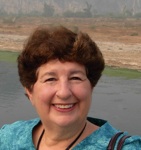 If you are reading this story on a computer, you are probably using electricity from coal.
If you are reading this story on a computer, you are probably using electricity from coal.
Our modern life style depends upon an uninterrupted and inexpensive supply of electrical energy. Coal powered electric plants operate around the clock to fill the demand for energy. Currently, half of the electrical power in the U.S. comes from burning coal. The percentage is even higher in Missouri—76 percent. And, in the St. Louis area alone, electrical consumption— and therefore the use of coal—is up 50 percent since 1990.
Most scientists and policy makers agree that we must make a transition to renewable and cleaner sources of energy as quickly as possible. In the meantime, however, a great deal of the electricity that we rely upon 24/7 will be generated by burning fossil fuels.
Read the entire article (500KB PDF).
This article was originally published in the St. Louis Beacon.


 During St. Louis summers, people usually have no trouble answering “Yes” to the question, “Is it hot enough for you.” Even though we’ve recently had weather that reminds many of Michigan in July, our summers and especially our winters have been getting warmer, and at an accelerated pace since the 1970s. Our area has become about 0.8 degrees centigrade (about 1.5 degrees Fahrenheit) warmer in the past 100 years, as has the average temperature of the globe.
During St. Louis summers, people usually have no trouble answering “Yes” to the question, “Is it hot enough for you.” Even though we’ve recently had weather that reminds many of Michigan in July, our summers and especially our winters have been getting warmer, and at an accelerated pace since the 1970s. Our area has become about 0.8 degrees centigrade (about 1.5 degrees Fahrenheit) warmer in the past 100 years, as has the average temperature of the globe.